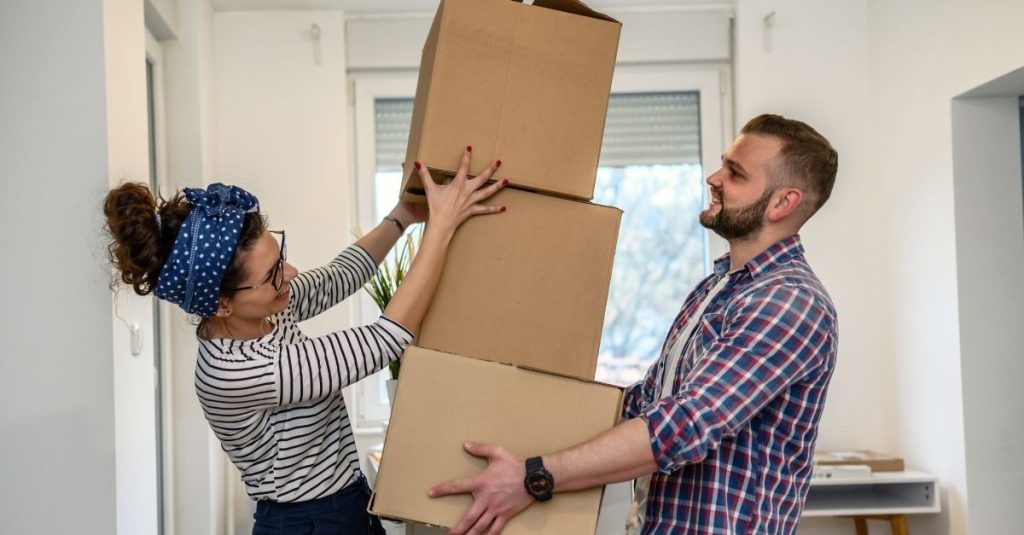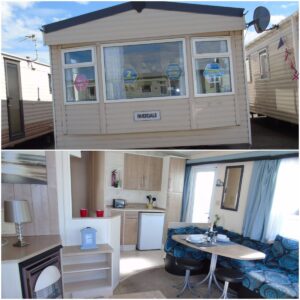From clutter to clarity: Tips for downsizing your space

Mehran Charania offers tips for homeowners needing to downsize
With the cost of living crisis and ongoing uncertainty around the property market, it’s no wonder that many of us Brits are having to make money-saving decisions when it comes to large purchases. As such, many households have elected to downsize and according to Which?, and over 20% still intend to do so as of 2024.
Indeed, there has been a notable rise in the downsizer market, with a huge 45% increase this year alone, according to The Guardian. However, there are many reasons why a household may choose to downsize. From children flying the nest, to relocating due to a new job, or just the desire to live more simply.
Downsizing can come with its own challenges, especially if it involves moving from a larger family home stocked with an accumulation of items. As a result, experts recommend decluttering your home around three months before the move. Yet, while essential, the decluttering process can feel like a mammoth undertaking and knowing where to start can be particularly taxing.
To help eliminate stress and speed up the decluttering process, here are a few top tips:
Taking it one room at a time
The thought of tackling your entire house can feel extremely daunting, with years of clutter and ‘tatt’ making the job seem endless. According to the RAC Home Insurance study, 23% of people can’t even fit their car in their garage because of clutter!
This is why it’s advisable to start small, approaching the job one room at a time. Once you’ve picked your room, it’s then time to make a plan and set out what you’re going to do with your unwanted items. For example, you can decide what you’re going to donate, sell, offer to family and friends or throw away.
When it comes to downsizing, it’s important to be mindful of what you have now and what you want to bring and purchase for your new space. This is why the selling of second-hand goods can be a solid solution when downsizing, as it is also a good way to source some welcomed extra cash which can go toward items for the new home, whilst also reducing waste.
By taking it one room at a time, the whole process seems smaller, and you’d be surprised at how much stuff you will part with.
And the category is…
Categorise, categorise and categorise some more! If you’re struggling to decide what to part with, it may help to organise into piles like keep and donate or used and unused in the past 12 months.
This can help you make rational and reasonable decisions by being honest with yourself about what you use and really need. A ‘maybe’ pile is often a controversial idea, with some experts saying that you need to be more ruthless. However, if you start your decluttering process ahead of time, you can take the pressure off of yourself to decide if you are going to need an item or not, by allowing yourself to ponder over it – especially for more sentimental items.
Propose the idea of reverse decluttering. Categorise by what you definitely want to keep, and then start working backwards. You may soon find yourself with a load of useless items that you didn’t know you had and held onto for so long.
Space – if you need more, look to store
Even if you are ruthless when decluttering, you still may not be able to accommodate some essential items. You may be losing an attic or storage cupboard that once helped to store away items that you didn’t need all year round.
Fear not! Your Christmas decorations, seasonal clothing, bikes or camping gear can remain part of your life via the use of a storage unit. Self storage is a great way of safely storing the belongings that you still want/need, without having to sacrifice space when you downsize.
Self storage has become a growing solution for many, according to the UK Self Storage Annual Report 2024, finding that there has been an 8.1% rise in self-storage space in the UK. It’s also no surprise that the Self Storage Association UK found that 29% of people who use self storage need it for move-related reasons.
Planning for the road ahead
A survey by ClosetMaid revealed that 88% of people have at least one junk draw, so don’t worry, you’re not alone. But it’s wise to figure out whether this will work in your new space.
A great way to plan for your downsize is to measure up your new space. What are your dimensions? How much storage do you have? Have you got many kitchen cupboards?
If you’re moving to a home with a smaller kitchen, a really useful way of decluttering is to get rid of duplicate items. Ask yourself whether you need those 3 whisks, 6 pans and various shaped baking trays. Items like these can take up necessary space that you might not have when you downsize.
Not only is this practice good for reducing spacing concerns but according to the National Soap and Detergent Association, getting rid of clutter eliminates 40% of housework in the average home – so it’s a win, win!
Ready to downsize?
If you are considering downsizing, it can feel like an initial ‘big step’. However, by following these tips, downsizing can be a manageable and beneficial experience, helping to eliminate clutter and working towards creating a new space, filled with only what you want and need.
By planning ahead, taking it room by room and utilising other options such as donation, selling unwanted items and self storage, decluttering can make downsizing easy and achievable. The most important thing is not to see reducing the number of things you own as a challenge but as an opportunity to focus on new beginnings and what you will gain from your new space.
About the author
Mehran Charania is Director of Ready Steady Store
Established in 2005, Ready Steady Store is one of the fastest growing self storage providers with cost effective storage units located in the Midlands, and South, North and East of England.











